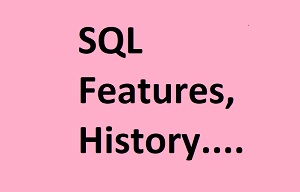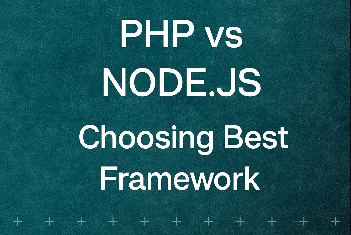Introduction:
Flutter, Google's open-source UI software development kit, has gained immense popularity in the world of app development. As we step into 2023, being well-prepared for a Flutter interview is crucial for securing a position in this competitive landscape. In this article, we've compiled a comprehensive list of the top 45 Flutter interview questions along with their detailed answers to help you succeed in your interviews this year.
1. What is Flutter?
Flutter is an open-source UI software development kit created by Google that allows developers to create natively compiled applications for mobile, web, and desktop from a single codebase.
2. How does Flutter differ from other cross-platform frameworks?
Flutter uses its own rendering engine, which allows it to achieve high-performance results, smooth animations, and a consistent look across different platforms.
3. Explain the concept of "Hot Reload" in Flutter.
Hot Reload is a feature in Flutter that enables developers to see changes in the code instantly without losing the app's state. It accelerates the development process by reducing the need for rebuilding the entire app.
4. What is a widget in Flutter?
Widgets are the building blocks of Flutter apps. They describe the UI by defining the structural elements, appearance, and behavior of different parts of the user interface.
5. Differentiate between StatelessWidget and StatefulWidget.
StatelessWidgets are immutable and don't change over time, while StatefulWidgets can maintain a mutable state that can be updated dynamically.
6. Explain the "State" in Flutter.
The State in Flutter is an object that holds data that can change over time and can be used to rebuild the user interface when the data changes.
7. How can you pass data between screens in Flutter?
Data can be passed between screens using constructors or by using the Navigator class's arguments property.
8. What is the purpose of the "pubspec.yaml" file?
The "pubspec.yaml" file is used to define the dependencies, assets, and other configurations required for the Flutter project. It helps manage project dependencies effectively.
9. What is the purpose of an "AppBar" widget in Flutter?
An AppBar widget is used to create a top app bar that typically contains the app's title, navigation icons, and other interactive elements.
10. Explain the concept of "State Management" in Flutter.
State management in Flutter involves managing the state of the app's widgets to ensure that the user interface reflects the latest data and changes in the app's logic.
11. Mention some popular state management libraries in Flutter.
Some popular state management libraries include Provider, Riverpod, BLoC, MobX, and Redux.
12. How can you handle user input in Flutter?
User input can be handled using various input widgets like TextField, Checkbox, Radio, and GestureDetector to capture and respond to user interactions.
13. Explain the purpose of "async" and "await" in Flutter.
"async" and "await" are used to handle asynchronous operations, allowing developers to write non-blocking code that waits for a result before proceeding.
14. What is a "Future" in Dart?
A Future represents a potential value or error that will be available at some point in the future. It is used to work with asynchronous operations.
15. How can you add platform-specific code in Flutter?
Flutter provides a mechanism called platform channels that allows you to call native code written in Kotlin, Java, Swift, or Objective-C from your Flutter codebase.
16. Explain the concept of "Widgets as Code" in Flutter.
"Widgets as Code" refers to the declarative programming style in Flutter where the UI is described using a hierarchy of widgets written in Dart code.
17. What is the purpose of "CrossAxisAlignment" and "MainAxisAlignment" in Flutter's layout system?
"CrossAxisAlignment" defines how children are aligned perpendicular to the main axis, while "MainAxisAlignment" defines how children are aligned along the main axis.
18. How can you handle different screen sizes in Flutter?
Flutter uses a responsive layout system where widgets adjust their size and position based on the available screen space. MediaQuery and LayoutBuilder are commonly used for this purpose.
19. Explain the term "Widget Tree" in Flutter.
The Widget Tree is a hierarchical structure of widgets that defines the layout and appearance of the user interface. It represents the relationships between parent and child widgets.
20. What is the purpose of the "SafeArea" widget in Flutter?
The "SafeArea" widget ensures that its child widgets are positioned within the safe boundaries of the screen, avoiding notches and system bars.
21. How can you perform navigation between screens in Flutter?
Navigation between screens can be accomplished using the Navigator class's push, pop, and replace methods.
22. Explain the significance of "Keys" in Flutter.
Keys are used to uniquely identify and manage widgets, especially when working with dynamic lists or when preserving widget state during rebuilds.
23. What are "Mixins" in Dart?
Mixins provide a mechanism to efficiently reuse code across various class hierarchies, enabling a class to inherit functionalities from multiple origins..
24. How can you add custom fonts to your Flutter app?
Custom fonts can be added to the app by including the font files in the project's assets and defining them in the "pubspec.yaml" file.
25. What is the purpose of "RxDart" in Flutter?
RxDart is a reactive programming library for Dart that provides a way to handle asynchronous events and streams using reactive programming principles.
26. Explain the concept of "InheritedWidget" in Flutter.
InheritedWidget is a way to propagate data down the widget tree to child widgets without the need to explicitly pass the data through constructor arguments.
27. How can you efficiently handle images in Flutter?
Images can be loaded and displayed using the Image widget. To optimize performance, consider using asset and network caching libraries like cached_network_image.
28. What is the significance of "Cupertino" widgets in Flutter?
Cupertino widgets are designed to mimic the iOS design style, providing a consistent and native-like experience for Flutter apps running on iOS devices.
29. How can you handle app localization and internationalization in Flutter?
Flutter provides the "intl" package to handle app localization, allowing you to create apps that support multiple languages and regions.
30. What are "Hero" animations in Flutter?
Hero animations are used to smoothly transition a widget from one screen to another while maintaining a visual connection, providing a polished user experience.
31. What is the purpose of the "WidgetsApp" widget in Flutter?
The "WidgetsApp" widget serves as the root of the widget tree and provides essential configurations for the app, such as theme, title, and locale.
32. How can you handle asynchronous operations in Flutter using the "FutureBuilder" widget?
The "FutureBuilder" widget takes a "Future" and a builder function, allowing you to easily handle asynchronous operations and update the UI based on the result.
33. Explain the role of the "PageRoute" class in Flutter's navigation system.
The "PageRoute" class defines the transition animation and behavior when navigating between screens in Flutter, offering customization options like slide, fade, and scale transitions.
34. What is the purpose of the "CupertinoPageRoute" class?
The "CupertinoPageRoute" class is specifically designed to provide iOS-style page transitions, ensuring a seamless and consistent navigation experience on iOS devices.
35. How can you efficiently manage and organize your app's assets in Flutter?
Flutter's "pubspec.yaml" file allows you to specify assets, including images, fonts, and other resources. The "flutter pub get" command fetches and organizes these assets for your app.
36. Explain the concept of "BuildContext" in Flutter.
"BuildContext" represents the location in the widget tree where a widget is built. It is often used to access inherited widget data or to show dialogs and overlays.
37. What is the purpose of the "ClipRRect" widget in Flutter?
The "ClipRRect" widget is used to clip its child within a rounded rectangle shape, allowing you to create rounded corners for images and other widgets.
38. How can you optimize app performance in Flutter?
Optimizing app performance involves using efficient state management, optimizing UI rendering using tools like the "Performance Overlay," and minimizing unnecessary widget rebuilds.
39. Explain the role of the "Dismissible" widget in Flutter.
The "Dismissible" widget provides a way to remove items from a list using swipe gestures. It is commonly used to implement swipe-to-delete functionality.
40. What is "BuildContext" and how is it different from "GlobalKey" in Flutter?
"BuildContext" is used to identify where a widget is in the widget tree, while "GlobalKey" is used to uniquely identify individual widgets, especially when working with lists and dynamic content.
41. How can you handle exceptions and errors in Flutter applications?
Flutter provides the "try-catch" mechanism to catch and handle exceptions. Additionally, you can use the "ErrorWidgetBuilder" to display custom error widgets in case of runtime errors.
42. What is the purpose of the "ValueListenableBuilder" widget in Flutter?
The "ValueListenableBuilder" widget allows you to listen to changes in a "ValueListenable" and rebuild parts of your UI when the value changes, improving the app's reactivity.
43. How can you add custom animations to your Flutter app?
Flutter's "Animation" and "AnimationController" classes, along with widgets like "Tween" and "AnimatedBuilder," enable you to create custom animations for various UI elements.
44. Explain the concept of "Keys" in Flutter's performance optimization.
Keys are used to improve the efficiency of widget rebuilding by allowing Flutter to identify which widgets have changed, avoiding unnecessary rebuilds and improving performance.
45. What is the role of the "SingleChildScrollView" widget?
The "SingleChildScrollView" widget provides a scrollable view for its child widgets, allowing content that exceeds the available screen space to be scrolled vertically. It's useful for smaller screens and layouts.
Conclusion:
As the demand for Flutter developers continues to rise in 2023, mastering these top interview questions and answers will undoubtedly boost your chances of acing your Flutter job interviews. By having a solid understanding of Flutter's core concepts, state management, UI design, and best practices, you'll be well-equipped to demonstrate your expertise and secure your place in the exciting world of Flutter app development.













